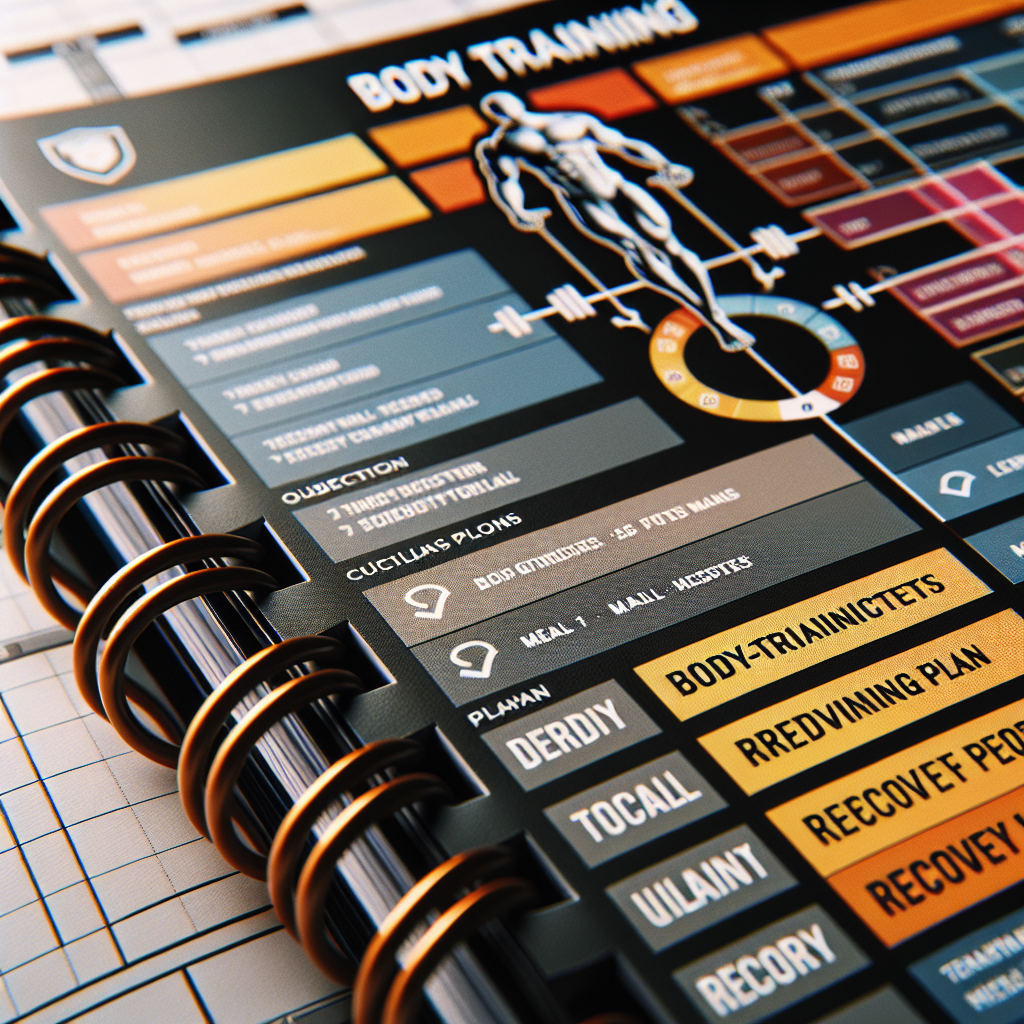Embarking on a fitness journey is a commendable decision that can lead to numerous health benefits and a greater sense of well-being. However, one of the most common pitfalls in this journey is the setting of unrealistic goals, which can lead to frustration, burnout, or injury. In this comprehensive guide, we’ll explore how to establish realistic fitness goals that are both challenging and achievable, ultimately leading to sustainable, long-term success.
The Importance of Realistic Fitness Goals
Setting fitness goals that align with your abilities and lifestyle is crucial. It provides you with a clear direction and helps to maintain motivation. When goals are unrealistic, they can be demotivating and may even lead to negative health outcomes. By setting achievable targets, you can enjoy incremental progress, which contributes to a positive feedback loop that fuels further success.
Understanding Your Starting Point
The first step in setting realistic fitness goals is to have a clear understanding of your current fitness level. Consider scheduling a physical examination or a fitness assessment with a professional. Assessments can include measuring your cardiovascular health, flexibility, muscular strength, and endurance. For more detailed insights, visit Avix Health on Fitness to understand the various aspects of fitness and how to gauge your starting point accurately.
Defining Your Fitness Objectives
Once you have a good grasp of your current fitness level, it’s time to define what you want to achieve. Your goals should be specific, measurable, attainable, relevant, and time-bound (SMART). For instance, instead of setting a vague goal like "get fit," a SMART goal would be "run a 5K in under 30 minutes in three months."
Creating a Balanced Approach
A well-rounded fitness program includes a mix of cardiovascular training, strength training, flexibility exercises, and recovery periods. Incorporating different types of exercises not only prevents boredom but also ensures that you’re building a balanced body. For guidance on creating a balanced fitness routine, consider reading about The Basics of Aerobic vs. Anaerobic Exercise.
Setting Short-Term and Long-Term Goals
Having a mix of short-term and long-term goals can help you stay motivated. Short-term goals provide immediate challenges and quick wins, which keep you engaged, while long-term goals offer a bigger picture to work towards. For example, a short-term goal might be to increase your daily step count by 1,000 steps, while a long-term goal could be to complete a half-marathon.
Crafting Your Fitness Plan
With your realistic goals in place, it’s time to craft a plan that will guide you towards achieving them. Here are some key components to consider:
Gradual Progression
Your body needs time to adapt to new stresses. Gradually increasing the intensity and volume of your workouts can help prevent injury and promote sustained improvement. Sites like Breaking Muscle offer insights into the science of workout programming and progression.
Consistency Over Intensity
Consistency is more important than intensity for long-term fitness success. It’s better to work out moderately every day than to have an extreme session once a week. Find ways to implement fitness into your daily routine for more on this approach, read Implementing Fitness into Your Daily Routine.
Recovery and Rest
Rest days are just as important as workout days. They allow your body to repair and strengthen itself. To understand more about the role of recovery in fitness, ACE Fitness has detailed articles on the importance of rest and recovery for athletes.
Nutrition and Hydration
Your body needs the right fuel and hydration to perform and recover. Setting goals related to your diet, like eating five servings of fruits and vegetables per day or drinking eight glasses of water, can support your fitness goals. For insights on how to optimize your nutrition, delve into the concept of Nutrient Timing for Optimal Performance.
Accountability and Support
Having a support system can greatly increase your chances of achieving your fitness goals. Whether it’s a workout buddy, a personal trainer, or an online community, find someone or something to hold you accountable. You can also use apps and technology to track your progress and stay on course.
Measuring Progress and Making Adjustments
It’s essential to regularly measure your progress towards your fitness goals. This not only shows you how far you’ve come but also helps identify areas that may need adjustment.
Tracking Your Workouts
Keep a workout log or use a fitness app to track the details of each session. This can include the exercises performed, the weights lifted, the distance run or cycled, and how you felt during and after the workout.
Listening to Your Body
Pay attention to your body’s signals. If you’re feeling consistently exhausted or notice decreased performance, it might be time to reassess your goals or the intensity of your workouts.
Flexibility in Your Fitness Plan
Be prepared to modify your goals as you progress. If you find a particular goal too easy or too challenging, adjust it so that it remains relevant and attainable.
Celebrating Milestones
Every time you reach a milestone, take the time to celebrate your achievement. This could be as simple as treating yourself to a massage or as significant as registering for a competition.
Conclusion
Setting realistic fitness goals is a dynamic process that requires self-awareness, careful planning, and regular reassessment. By following these guidelines, you can create a sustainable path to fitness that aligns with your lifestyle and personal aspirations. Remember to use the wealth of resources available to you, both on Avix Health and external specialized sites, to support and inform your fitness journey.
Stay committed, be patient, and enjoy the process. Your fitness goals are not just about the destination but also about the journey and the person you become along the way.



